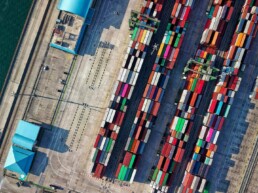India Exports Grow Amid Shift From China
India exports grow as U.S. companies continue to shift away from Chinese manufacturing. A new study by Boston Consulting Group (BCG) has found that India may be the biggest winner, with exports to the U.S. increasing by $23 billion, a 44% increase from 2018 to 2022.

Rising Exports: India’s Triumph Amidst Shifting Tides
In recent years, a significant transformation has swept through the manufacturing landscape. With geopolitical uncertainties and escalating U.S. tariffs driving companies away from China, India has emerged as a promising contender. According to a comprehensive study by the Boston Consulting Group (BCG), India has witnessed a remarkable 44% surge in exports to the U.S., amounting to a substantial increase of $23 billion from 2018 to 2022.
Navigating a Turbulent Trade Landscape
From the enduring challenges of a global pandemic and natural disasters to the relentless trade wars and supply chain bottlenecks, a multitude of factors has impelled companies to reconsider their manufacturing and sourcing strategies. Shockingly, over 90% of North American manufacturers surveyed by BCG have already relocated a portion of their production out of China in the past half-decade. Even more striking, an equal proportion plans to replicate this move within the next five years.
India, Mexico, and Southeast Asia: The Future Manufacturing Frontiers
BCG’s study not only underscores India’s ascent as an influential export destination but also highlights Mexico and Southeast Asia as burgeoning manufacturing hubs. These regions share common traits such as competitive cost structures, abundant labor pools, and a growing industrial footprint. India, however, distinguishes itself with its expansive domestic market and favorable government incentives. Yet, challenges persist, primarily in the realm of infrastructure and logistics.
The Logistics Challenge: Unlocking India’s Potential
Consultant Brittain Ladd notes a critical observation from his time in India – the dearth of robust logistics infrastructure. India’s logistics costs currently constitute a significant 14% to 18% of GDP. To compete effectively with its Asian counterparts, India must slash these costs to 10% or less of GDP. Initiatives are underway, with substantial investments pledged to modernize highways, rail networks, and ports. Still, India lags behind Japan, South Korea, and mainland China in port capacity and efficiency.
A Distinct Path Forward for India
It’s essential to clarify that India’s aim should not be to replicate China’s trajectory. Rather, India should aspire to lead in digitally connected manufacturing, warehousing, logistics, and third-party logistics and transportation services. The focus should be on carving out a unique identity and niche in the global manufacturing landscape. Achieving this vision necessitates concerted efforts and investments, particularly in technology and infrastructure.
Evolving Trends, Mixed Outcomes
Despite the ongoing exodus from Chinese manufacturing, the study reveals that these moves have not universally met their objectives. Only approximately 55% of surveyed companies report full success in their production relocations, which aimed to achieve cost savings, labor accessibility, and faster time-to-market. This shortfall can be attributed to a lack of a comprehensive market-driven approach.
The Way Forward: Striving for Resilience
Even as the effectiveness of these shifts varies, executives are willing to sacrifice more than 2% of gross margins, on average, to bolster supply chain resilience and avoid future disruptions. A successful production footprint strategy has the potential to reduce manufacturing and supply chain costs by 20% to 50% while enhancing sustainability and resilience.
Navigating Supply Chain Risks Amid China’s Economic Slowdown
The global economic landscape has seen significant shifts, with China’s economic growth rate declining from double digits to 3% in 2022. Navigating supply chain risks amid China’s economic slowdown is not an easy task. The repercussions of factory and city closures during the pandemic have affected China’s ability to recover fully. As a result, many U.S. companies are reconsidering their sourcing and manufacturing strategies in the region. Some are opting to move their production to other low-cost countries like Vietnam, India, and Mexico, while others are even reshoring manufacturing back to the United States. This shift has put Chinese suppliers in a challenging position, with declining business leading to potential factory closures or bankruptcies.
Read More…
The transition of manufacturing from China to India, Mexico, and Southeast Asia represents a significant response to global trade disruptions. India’s remarkable rise stands out, driven by its unique advantages and opportunities. However, the road ahead is paved with challenges, particularly in logistics infrastructure. India’s focus on digitalization and innovation will be instrumental in shaping its distinct manufacturing identity. As companies adapt to this evolving landscape, a holistic market-driven approach remains the key to long-term success and supply chain resilience.





